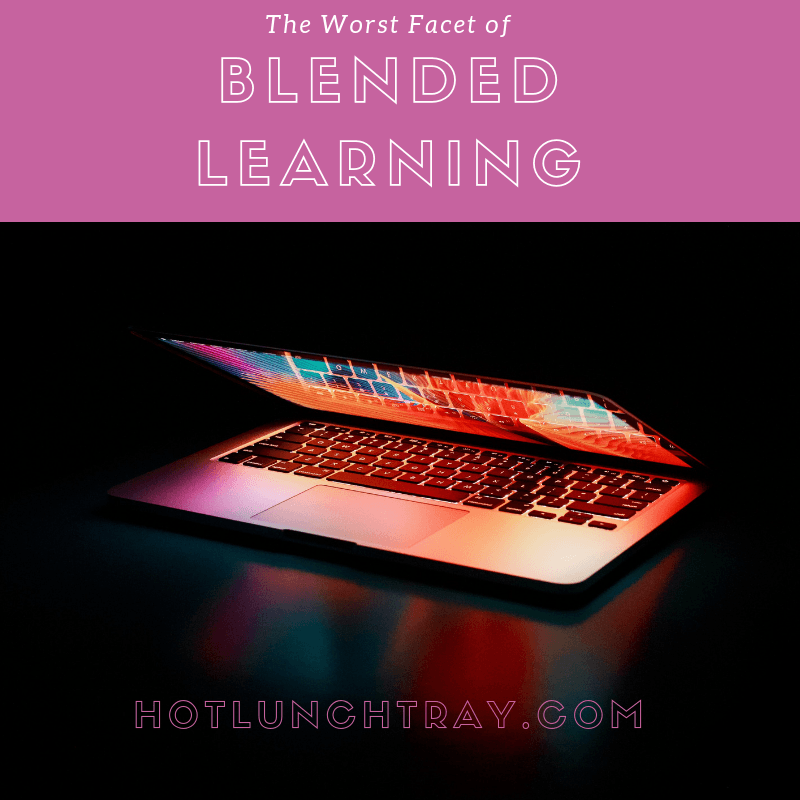Is the worst facet of Blended Learning that
you are only hearing about it from your Technology Department?
Is Blended Learning Different?
Education in the Past
Historically, education moves pretty slowly. I taught in much the same way my great-grandmother taught in a one-room schoolhouse. That is until I started experimenting with the Internet.
Education values proven results, and Blended Learning is an unproven way to teach for many educators.
Education needs a strategy to teach in this new world of information. K-12 education must ready itself for the influx of information and equip students to handle that information. That is the “why.”
EdTech Companies
There have been unprecedented amounts of money pouring into educational technology over the past ten years; particularly over the last five years. Almost $1.5 Billion was raised in 2018, second only to 2015, but invested in fewer edtech companies was invested in the market. There is no reason to expect the market to slow, that means schools are buying what edtech companies are selling.
But educational institutions have limited resources. And money will slow. Unless K-12 institutions, in particular, have gains to show, they will be in trouble.
This is the “how,” educators need to learn what to guard against infusing into their classrooms. Embrace it, because it is already here, but develop a strategy for how it will be present in your classroom and in your instruction.
The Technology Department
A way to entrench into a K-12 institution is through the budget. Once you have a budget line, you are entrenched in the institution. A way to gain power in an educational institution is to gain reports or those who work for you. There was not a Technology Department when I was a K-12 student. And there may have been one at the first district I taught at, but even the first Technology Department I remember had only two people in it. Now I work for a Technology Department with 20-30 people in it.
Because early Blended Learning was pioneered by edtech enthusiasts this has been witnessed as largely a technology initiative, instead of a new way to teach and learn.
Yes. Blended Learning is different.
Who Gains from Blended Learning?
Blended Learning is the preferred use case from those interested in implementing the technology. That also might be a bias to guard against. It creates demand for more hardware, new software, and more technology department hires.
It is in fact an instructional strategy, so why hasn’t your curriculum and instruction department or instructional coach pushed blended learning more? They may not feel techno-confident. And the K-12 leadership may be shielding them from that. Education is historically slow to change.

“Why the focus on Tech, not Teachers?
Although teachers are clearly the biggest impact lever in blended learning, it’s easy to understand why technology often steals the limelight. For one, it’s much harder to recruit, develop, and support effective teachers than it is to buy new devices or software licenses; and when you walk into a classroom, new shiny hardware and flashy software are more eye-catching than the skills and expertise living inside a teacher’s mind. Thus, education leaders are easily drawn to the electronic aspects of blended learning at the neglect of the real engines of success. Additionally, blended learning and quality teaching can often seem like distinct and separate initiatives. On the landscape of education reforms, blended learning and teacher quality each has its own set of policy proponents, technical support organizations, publications, and conferences”Arnett, T. (2018, May 08). The Secret Element in Blended Learning
Is the worst facet of Blended Learning that you are only hearing about it from your Technology Department?
Yes.
Who should own Blended Learning?
Curriculum and Instruction
Those who should embrace and refine the teaching and learning process are markedly absent from this discussion. Partly because this focuses on hardware, software, and extended classroom scenarios this new way of teaching has largely been left untouched by official teaching departments. Ironically, where it is/can be implemented the adoption rate for blended learning is rapid.
Classroom Teachers
Ultimately classroom teachers are the largest implementors of Blended Learning. This is a blessing and a curse. The implementation is not always with fidelity since it is self-guided often, but it is organic and meaningful. Many new ways to implement have been introduced by classroom teachers. However, even the definition of Blended Learning has been a source of contention because of the myriad of ways to blended instruction out there.
What is Blended Learning like in your school or district?







1 Pingback